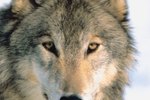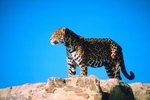
Rare and elusive, snow leopards live in remote areas of Central Asia. Harsh climates, rugged terrain and high altitudes characterize their habitat. Their numbers have plummeted -- mostly because of conflicts with people -- and scientists believe only 3,500 to 7,000 of these animals remain in the wild. They appear to be making a comeback on Mount Everest, though -- proof that conservation strategies are succeeding.
Return
After the late 1960s, snow leopards apparently disappeared from Mount Everest for decades. Alerted by local people’s claims that cats were returning to the area, a researcher photographed two snow leopards in 2005. Those images, along with tracks of two other animals, confirmed the cats’ presence on the mountain’s Nepali slopes. In 2009, farmers captured and later released a snow leopard at the foot of Everest in Tibet.
Everest
Mount Everest -- also called Sagarmatha in Nepal and Qomolangma in Tibet -- reaches more than 29,000 feet above sea level.The mountain’s lower and mid-level slopes are prime snow leopard habitat. Throughout most of their range, these cats prefer elevations between 9,800 and nearly 15,000 feet. They usually live in alpine and sub-alpine areas characterized by steep slopes, rocky cliffs and gullies.They’re equipped for freezing temperatures and harsh conditions, with large paws that help them navigate over snow, thick tails they can wrap around themselves for warmth and dense undercoats.Snow leopards usually avoid people, though -- a potential challenge in Sagarmatha National Park, which hosted 25,000 visitors in 2010 and continues to see tourism grow.
Prey
On Mount Everest and in the surrounding Himalayas, snow leopards eat mainly blue sheep, also called bharal. The cats’ other wild prey includes wild goats such as ibex and tahr, hares, marmots and pika and large birds. Unfortunately, they also feed on livestock, such as goats, horses, sheep and even juvenile yaks -- which places them in direct conflict with local farmers and herders.
Conservation
Snow leopards often have been illegally hunted for their pelts and body parts used in traditional medicine. Strong anti-poaching penalties, including prison sentences in Nepal and hefty fines in the U.S., are being enacted to decrease this threat.
On and around Mount Everest, farmers have frequently killed snow leopards who prey on their livestock. Conservation groups are working with these farmers to help build more secure enclosures for cattle and provide compensation when the cats attack domestic animals.
References
- UNESCO World Heritage Centre: Sagarmatha National Park
- EarthWatch Institute: Snow Leopards Return to the Top of the World
- Snow Leopard Trust: Snow Leopard Fact Sheet (PDF)
- Snow Leopard Conservancy India Trust: Scientific Research
- IUCN Red List of Threatened Species: Panthera uncia
- Focus on Tibet: Rare Snow Leopard Found at Foot of Mount Everest
Resources
Photo Credits
-
Jupiterimages/Photos.com/Getty Images




